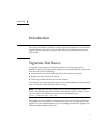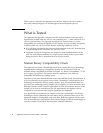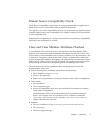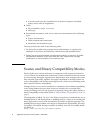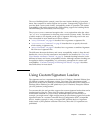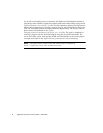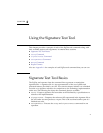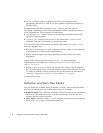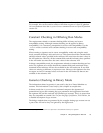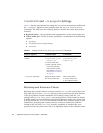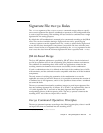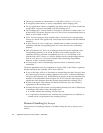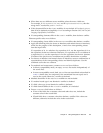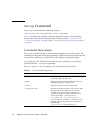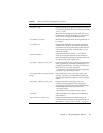
8 Signature Test Tool 2.0 User’s Guide • April 2008
■ Merge - Creates a combined signature file from several signature files
representing different Java APIs in one Java runtime environment according to
the JSR 68 rules.
The SigTest tool distribution includes a Java™ Archive (JAR) file used for
developing a signature test and one for distribution within a finished test suite to
run its signature test. The description of each follows:
■ sigtestdev.jar - Contains classes for running the commands used during
signature test development.
■ sigtest.jar - Contains only the classes for running the SignatureTest
command. This file is distributed in a finished test suite.
Test suite developers perform these operations while using sigtestdev.jar to
develop a signature test.
1. Run the Setup command to create a signature file from either an API defined by
a specification or a reference API implementation.
2. Include the files required to run the signature test in the finished test suite
distribution.
Testers perform these operations using sigtest.jar while testing the
implementation, as described in “Running a Signature Test With the JavaTest
Harness” on page 23.
1. Run the SignatureTest command to compare the reference representation of
the API in the signature file to the API under test and produce a report. This step
is usually performed under the control of the JavaTest harness as described in
“Running a Signature Test With the JavaTest Harness” on page 23.
2. Interpret the report.
Reflection and Static Run Modes
Two run modes are available during command execution. These modes determine
how the class descriptions are examined and retrieved, as follows:
■ Reflection Mode - Uses reflection to examine API classes and retrieve information
about them. The reflection mode is of greatest advantage when the API to be
analyzed has no external class files.
■ Static Mode - Specified with the -static flag, the tool parses only the class files
listed in the -classpath command-line argument.




